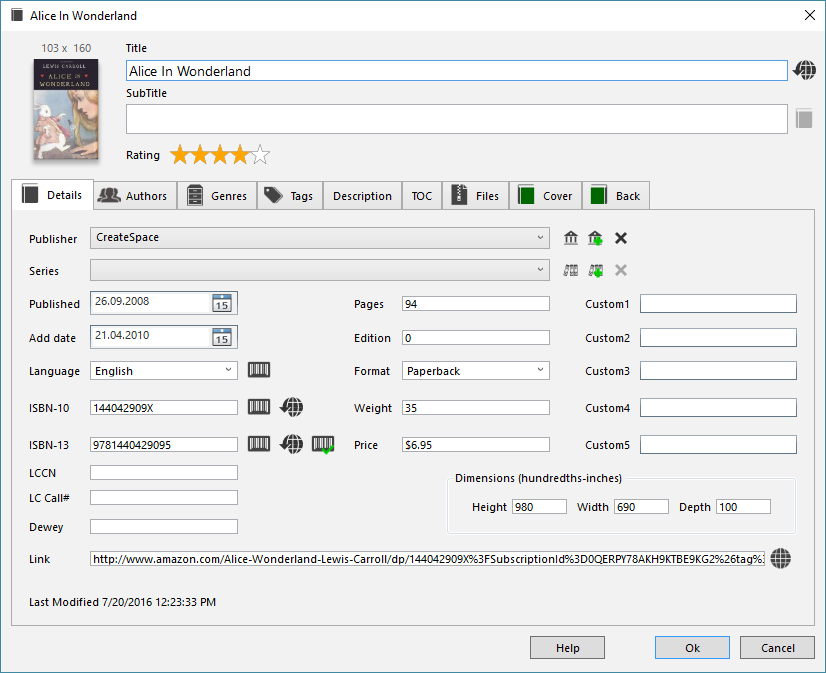

To demonstrate, consider a fictional bookstore that records their sales in a software system.

Use metadata is gathered in a clear and direct attempt to make potentially helpful predictions about a user’s future behavior. Use metadata is data that is sorted each time a user accesses and uses a specific digital piece of data. Things provenance metadata might touch on are the companies or users who impacted a digital object and what types of things they did to it or methodologies they used. What makes provenance metadata so important is it provides data about a digital file or resource’s history, which helps track it over its lifecycle. However, in the digital realm, this happens all the time. Now, for physical objects this is much less important, as we do not duplicate these as often. With provenance metadata, this means that it’s most relevant when something changes or is duplicated frequently. The easiest way to think of provenance metadata is by first considering the definition of provenance, which is roughly “The earliest known history of something.” This brings forth common factors important to preservation and maintenance, including information that shows actions taken on a digital file or the rights attached to it. Preservation metadata upholds the integrity of a digital object or file from its start to finish, or until it’s no longer in use or necessary.Ī common pattern involved is the PREMIS model (Preservation Metadata Implementation Strategies). This information may include vital details required for a system to communicate or interact with a specific file. Preservation metadata offers information that can strengthen the entire procedure of maintaining a certain digital object/file. In the above example of the DVD, structural metadata would inform users of the correct placement of these sections on the disc.

In a more broader sense, structural metadata records information about how a particular object or resource might be sorted. Each section has a certain length of film running time, and those sections fit together into the format in a certain order. Here’s an illustrative example: A film in a DVD format has numerous sections. This often relates to a piece of digital media. Structural metadata gives information concerning a specific object or resource. The only time descriptive metadata becomes more advanced or complex is when it’s being used to identify unique elements, such as code-driven projects and websites. It’s also one of the easier types of metadata to understand, and provides basic information about things, such as book titles, author name, date, etc. When a user downloads a video file, for example, the runtime of the film would be descriptive metadata.ĭescriptive metadata is often the most commonly referenced and utilized metadata, since it is so accessible, visible and relevant on popular file types. This often refers to elements like titles, dates and keywords. Descriptive metadataĭescriptive metadata is, in its most simplified version, an identification of specific data.

With that definition in mind, let’s take a look at six types of metadata you’ll encounter. A popular definition of metadata is “data that describes other data.” It’s a bit more complicated than that, as metadata is used extensively to sort and translate (so to speak) complex data into something more manageable and understandable.


 0 kommentar(er)
0 kommentar(er)
